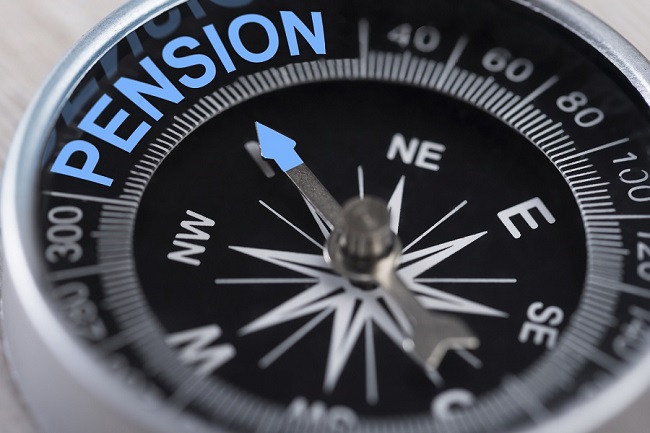 The comptroller's performance with the pension fund is crucial because New York counts on investment returns to cover a big share of the benefits promised to employees. (Photo: Getty)
The comptroller's performance with the pension fund is crucial because New York counts on investment returns to cover a big share of the benefits promised to employees. (Photo: Getty)
(Bloomberg) –In New York, one person is responsible for the state pension's $209 billion, a sum that would be the envy of even Wall Street's biggest money managers.
But the fund's investment returns under the job's current occupant, Comptroller Thomas DiNapoli, have been less exciting, leaving his performance under fire as he campaigns to keep the job he's held for the past 11 years.
New York's Common Retirement Fund, the nation's third-largest public pension, returned 6.4 percent after fees for the 10-year period ending March 31, the end of New York's fiscal year. That ranks sixth among the 10 biggest U.S. state retirement systems that had data available for the period.
DiNapoli's stewardship of New York's pension is a focus of the race for comptroller, one typically overlooked compared with the governor and attorney general contests.
His Republican opponent, Jonathan Trichter, has said that if elected he will ban investments in expensive private-equity and hedge funds and wind down those portfolios.
DiNapoli “would have done much better for New York retirees had he passively invested the equity portfolio in S&P indexes,” Trichter said at a debate this month.
Trichter, a former Democratic operative who secured special permission from the Republican Party to run on its ticket, has worked as a public finance banker at JPMorgan Chase & Co. and at the MAEVA Group, a restructuring firm founded by Harry J. Wilson. Wilson lost the comptroller's race to DiNapoli in 2010.
With Democrats outnumbering Republicans by more than 2-to-1 in New York, DiNapoli is favored to be elected to another four-year term.
The comptroller's performance is crucial because New York counts on investment returns to cover a big share of the benefits promised to employees.
When returns fall short of targets, New York and its local governments need to pay more to make up for lost ground. Despite lackluster returns, New York's pension is almost fully-funded, because taxpayer contributions more than doubled during the decade to make up the gap.
Like other states, New York has turned to investments like corporate takeover funds in search of higher returns. While New York's $17.5 billion private-equity portfolio has earned an annualized return of 8.3 percent over 10 years, it has lagged its benchmark, the Cambridge U.S. Private Equity Index, by 1.5 percentage point.
The state's leveraged buyout, venture capital and “special situations” funds trailed the 9.6 percent return of the Russell 3000 and 9.5 percent return of the S&P 500.
Private-equity funds may be expensive, but they help diversify the fund's portfolio, DiNapoli said at the debate, hosted by Manhattan Neighborhood Network. New York's pension paid $515.2 million in private-equity related expenses in fiscal 2018.
“To put all of our money in index funds would be totally irresponsible,” DiNapoli said. “If we've learned anything from the global financial crisis, you have to be diversified.”
The pension's performance “is right in line,” with other large public retirement funds, said Doug Forand, a spokesman for the DiNapoli campaign.
“Under Comptroller DiNapoli, the state's pension fund bounced back from the Great Recession, doubling in value to $209.2 billion today,” Forand said. “It is one of the strongest and best funded plans in the nation.”
The New York fund's public equity and fixed-income investments, which comprise 77 percent of its assets, beat benchmarks over the 10-year period, while real estate, which accounts for about 7 percent of assets, lagged. Much of the pension's public equities allocation is passively invested through indexes, DiNapoli said.
The pension has also adopted a more conservative investment outlook, DiNapoli said, gradually reducing its assumed rate of return to 7 percent from 8 percent over his tenure.
And it's in a far stronger position than most pension funds: in 2017, it was nearly fully funded, with assets sufficient to cover about 95 percent of the benefits that have been promised, the third-best among U.S. states, according to data compiled by Bloomberg.
Of the biggest public pensions, only Georgia's teachers fund exceeded an annual 7 percent gain over the 10 year period, which includes the financial crisis and Great Recession. The California Public Employees' Retirement System, the biggest U.S. pension with about $350 billion in assets, had the worst 10-year returns at 5.4 percent.
The California State Teachers' Retirement System and New York's Teachers Retirement System, the second and fifth-biggest funds, respectively, didn't provide March 31 returns to Bloomberg.
DiNapoli has been in office since February 2007, when New York's Legislature voted to name him Comptroller, replacing Alan Hevesi, who resigned after pleading guilty to using state employees to chauffeur around his disabled wife. Hevesi later pleaded guilty in 2010 to participating in a pay-to-play scandal and served more than 18 months in prison.
READ MORE:
Why Wisconsin's pension fund is working
Most employees with pension funds that are underfunded don't know it
© 2025 ALM Global, LLC, All Rights Reserved. Request academic re-use from www.copyright.com. All other uses, submit a request to [email protected]. For more information visit Asset & Logo Licensing.







